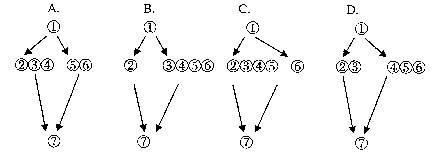题目内容
we move the picture over there? Do you think it will look better?
A.If only B.What if C.As if D.Even if
B

 暑假作业海燕出版社系列答案
暑假作业海燕出版社系列答案 本土教辅赢在暑假高效假期总复习云南科技出版社系列答案
本土教辅赢在暑假高效假期总复习云南科技出版社系列答案 暑假作业北京艺术与科学电子出版社系列答案
暑假作业北京艺术与科学电子出版社系列答案 第三学期赢在暑假系列答案
第三学期赢在暑假系列答案Nothing says love like a dozen long – stemmed roses on Valentine’s Day. More than a million roses will be sold during this festival for lovers, the biggest day of the year for the nation’s rose industry. It’s going to remain the most popular flower because love never goes out of style.
Yes, a rose is a rose is a rose. But selling them is no longer a beautiful experience for traditional flower shops. Supermarkets now offer convenience to the busy and discount rose shops help those hopelessly in love save money. Roses only is a good example of a discount rose retailer that was transformed from a traditional shop to answer the challenge in the’ 90s.
Inside this store on Sixth Avenue near 40 th Street, contemporary white furniture and wall – to – wall mirrors give it an expensive look. Customers move about freely among the counters, looking eagerly at the roses in more than 50 colors from shelf to shelf. Some customers say it’s the high quality of the roses that attracts them there. “I spent $ 20 but the flowers looked like I paid 60 or 70 dollars,” says one customer.
Studies show more people are buying roses in ones, two and threes these days. In fact, more than half of all roses are sold in bunches of fewer than a dozen. But Roses Only's low prices encourage people to spend. Even on Valentine's Day, when the price of a dozen roses and delivery can soar as high as $150, 12 of Roses Only's most expensive flowers sell for just $35. The company's key to success is to hold prices down by controlling every link in the rose chain. It grows its own roses in the sunshine of the Andes Mountains. In addition, the company also sells other items such as ballons and stuffed animals.
While discount rose retailers are witnessing their business bloom, U.S. rose growers aren’t able to compete with the fierce foreign competition. More than 57% of roses sold in the USA are grown in other countries. The biggest foreign producers are Colombia and Ecuador, which accounted for almost 90% of the total imported last year. The trend has hurt domestic rose growers such as Johnson Flowers of California, considered to be this country's leading producer.
Now, instead of fighting overseas rivals, the Johnsons are trying to work with them. "We have a few big fighting overseas rivals, the Johnsons are trying to work with them. “We may also widen our business to include the service area and be a representative for overseas flower producers.”
As a result of severe competition, those in the rose business long for the good old days, whereas ordinary people benefit from the low price.
60.What is the central theme of this text?
A.The US rose business is going from bad to worse in spite of the efforts made.
B.The rose will remain the most popular flower as love never goes out of date.
C.The rose business is trying to meet the challenges in the market to succeed.
D.The rose industry plays an important role in American economy.
61.How does Roses Only obtain success in the discount rose retailing field?
A.By setting up more chain stores across the country.
B.By selling roses in supermarkets.
C.By selling high quality roses at a low price.
D.By selling roses by the dozen.

